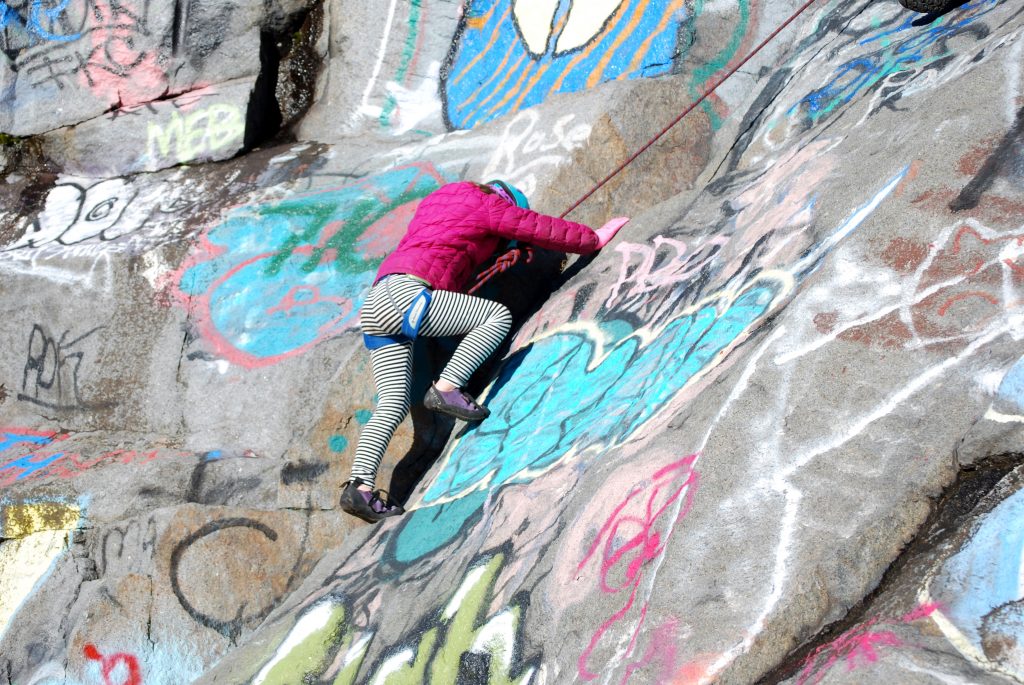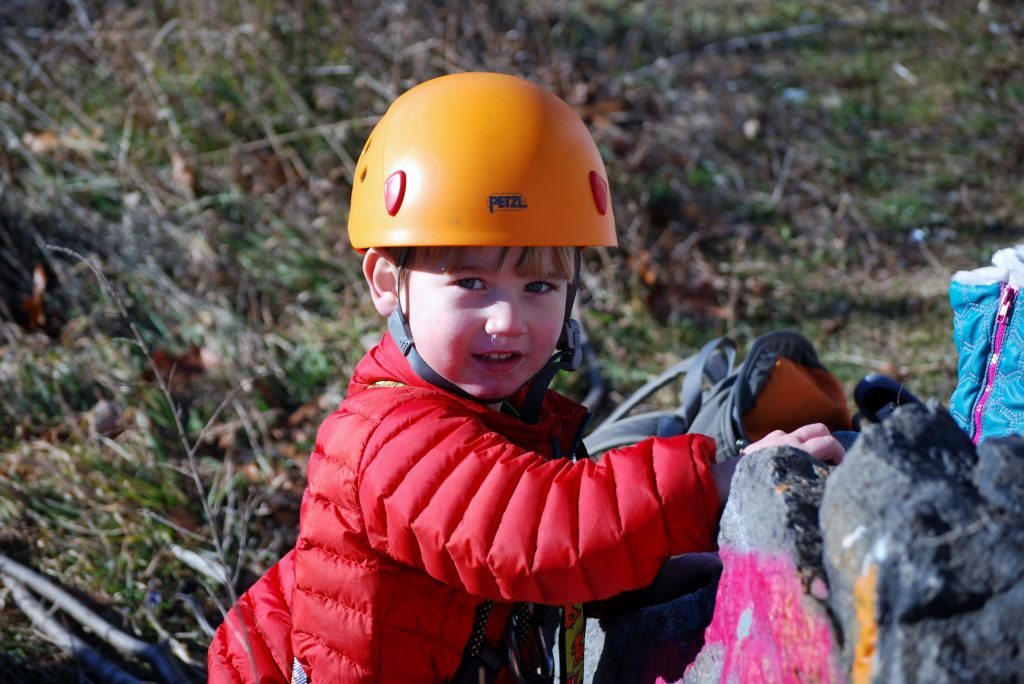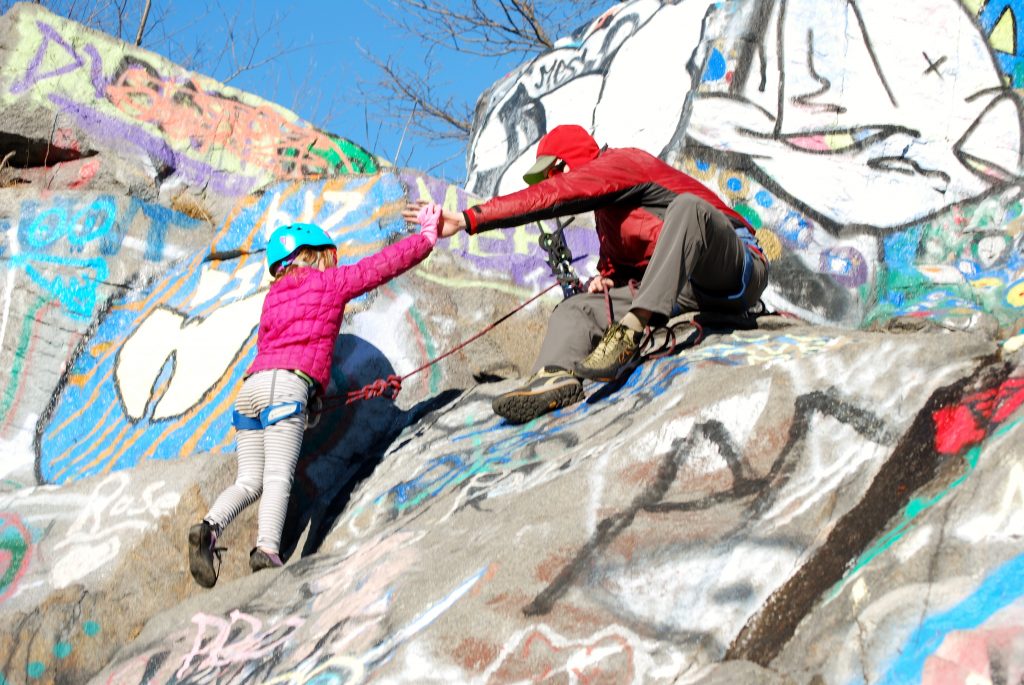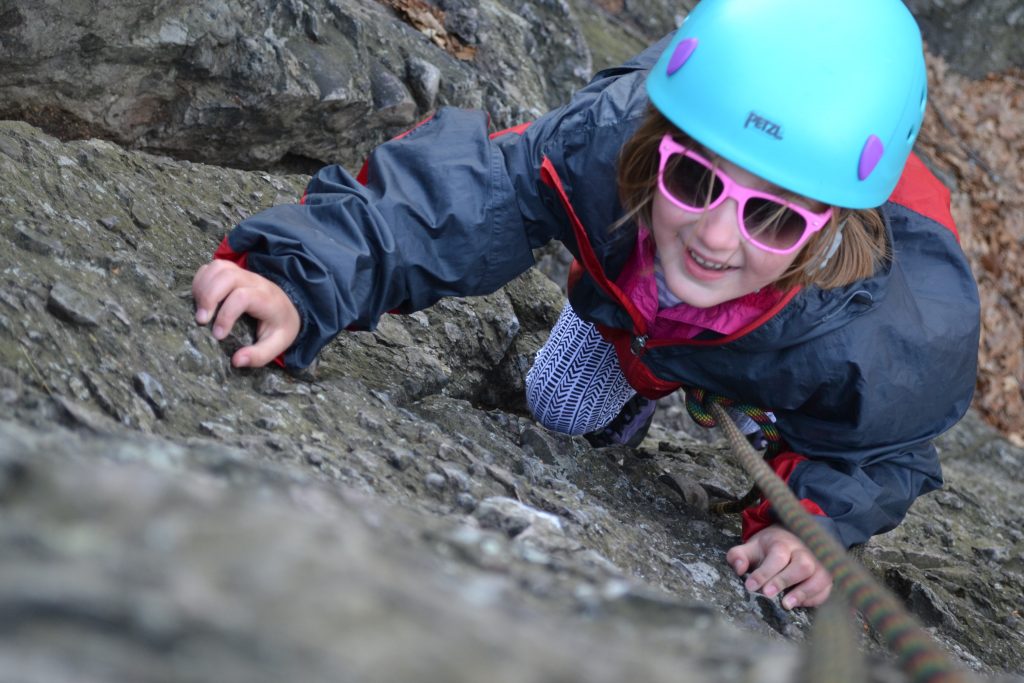Rock climbing is great for children. It gets them outside, it teaches problem solving, communication, and trust, and most importantly, it offers them an outlet to expend their infinite energy reserves. For all these reasons, you should consider taking them with you the next time you head off to climb outdoors.
At the same time, a trip to the local crag becomes a bit more complicated when you add child-climbers into the mix. So, to prepare, here are nine tips to keep cragging with the kiddos fun and safe for everyone.

1. Choose the Right Crag
Kid-friendly, top-roping crags typically have three things in common. First, there is an easy and short approach with no objective hazards. Second, the staging area at the base of the climb—where you’ll be spending the next couple of hours belaying and hanging out—is flat and safe. Third, the routes should be easy (between 5.0 to 5.5) and less than vertical, and should have smooth landings, in case they have trouble with the first few moves.
If you’re in the Boston area, the most concentrated selection of beginner climbs is on the Main Wall at Chestnut Hill’s Hammond Pond. The best route, an alcove at the far-left end, is a fun, easy climb that everybody can do.
2. Get Them the Right Gear
Kids need two pieces of equipment to climb safely: a harness and a climbing-specific helmet. Climbing shoes are not essential, but their sticky rubber soles do make things easier.
For children younger than 6 or 7, a full-body harness is recommended. These harnesses have a tie-in point at chest-level and are designed to prevent kids from falling out if they flip upside down.

3. Help Them Through the Hard Moves
Climbing does not come easily for every kid. If your kiddo is struggling at a specific move low on the route, one simple technique that helps build confidence is the “foot-spot.” Just use your hand to stabilize her foot on the hold, so that she can climb through the difficulty to easier terrain.
If her crux is out of your reach, consider having the belayer take a little extra weight as the climber attempts the move. This extra “pull” is often enough to assist a child through the move and allows him or her to finish the climb.
4. What Goes Up Must Come Down
First-time climbers often struggle with transitioning to being lowered after they get to the top of the climb. So, before your kid leaves the ground, rehearse what will happen once she reaches the top. Kids are much more likely to “trust the rope” if you’ve had them climb up about six to seven feet and then do a practice lower. Moreover, it’s much easier to correct their body position for lowering when they are within arm’s reach than when they are swinging nervously at the top!

5. Bring Snacks and Toys
Bring a variety of small snacks for the kids after their “sends.” They help keep the energy levels high and usually provide enough distraction for the break between climbs.
If you are planning on climbing with a couple of kids, consider bringing toys and games to keep them busy and engaged throughout the outing. For example, we always bring my younger son’s toy trucks when we go climbing as a family. He’s only three, so his attention span for climbing can be quite short. But, he’s always happy to hang around and fill his dump truck with dirt while the rest of us get in a couple more top-rope laps.
6. Set Clear Expectations
Kids, especially young ones, require a lot of attention when climbing. Set expectations by articulating clear rules, particularly about edge safety. And, when climbing with several kids, having a second adult, who supervises the non-climbing children so the belayer can avoid distractions, keeps the focus solely on the climber’s safety.

7. Manage Your Own Ambitions
When you head out to climb with your family, try not to get carried away with your own “sending” ambitions. Your project is probably too hard for your kids, and they’ll get bored—and want to go home—if they have to watch you work it for too long. Try instead to get your climbing fix either on the route they’re climbing or on an adjacent one.
8. Not Every Climbing Session Ends Perfectly
Despite your best efforts, sometimes the climbing is too crowded, the route is too hard, or your little climber just isn’t into it. To avoid a total loss, have a backup plan. Scrambling on a nearby easy boulder problem is often a good alternative. A quick hike or nature walk is another option.
9. Consider Taking a Lesson
Climbing is dangerous. If you are interested in climbing with your family, but don’t feel confident doing it yourself, sign up for a lesson with the Eastern Mountain Sports Climbing School.
Can you think of any other tips for rock climbing with kids? Share them here in the comments section!
Douglas Martland
Doug is an avid skier, climber, and runner. In his spare time, he guides for the EMS Climbing School and is certified as an AMGA Single Pitch Instructor. He also claims the very unofficial record for most known laps on his favorite moderate routes at his home crag, the Quincy Quarries’ White and Black Knight.
Related Posts
April 12, 2024
Explore Like a Local: The Outdoor Mecca of North Conway, NH
There's a lot to love about this New…
April 3, 2024
5 Things To Do in the Boston Area During Mud Season
Adventure opportunities are abundant…




